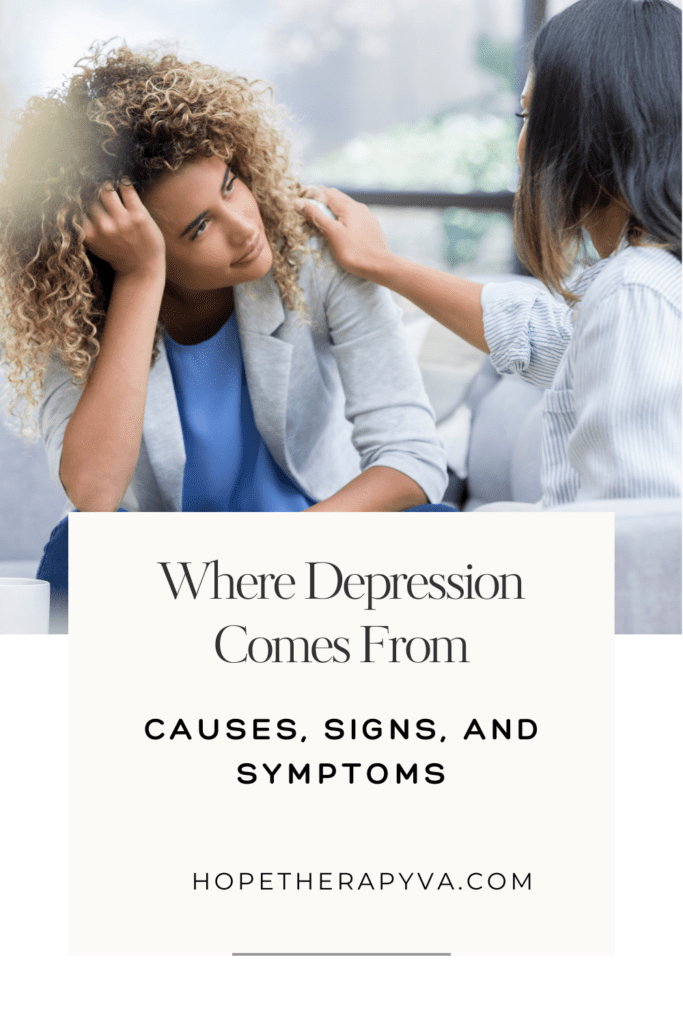Introduction
Depression is one of the most common mental health conditions worldwide, affecting millions of people of all ages, backgrounds, and lifestyles. Despite its prevalence, depression is often misunderstood, stigmatized, or dismissed as a simple case of sadness. However, depression is far more than feeling down for a few days—it is a serious medical condition that can impact every aspect of a person’s life, including their thoughts, emotions, physical health, and relationships.
This article provides an educational overview of depression, covering its symptoms, causes, risk factors, and treatment options. Whether you are personally experiencing depression, supporting someone who is struggling, or simply seeking to learn more, this guide aims to offer clarity and insight into this complex condition.

What is Depression?
Depression, clinically known as Major Depressive Disorder (MDD), is a mood disorder characterized by persistent feelings of sadness, hopelessness, and a loss of interest or pleasure in daily activities. Unlike temporary emotional reactions to life’s challenges, depression lingers for weeks, months, or even years if left untreated. It can interfere with work, relationships, and overall well-being, sometimes leading to severe consequences such as self-harm or suicidal thoughts.
Symptoms of Depression
Depression manifests in different ways depending on the individual, but common symptoms include:
Emotional Symptoms:
- Persistent sadness or low mood
- Feelings of hopelessness or emptiness
- Increased irritability or frustration
- Guilt or feelings of worthlessness
- Loss of interest in activities once enjoyed
Cognitive Symptoms:
- Difficulty concentrating or making decisions
- Recurrent thoughts of death or suicide
Physical Symptoms:
- Changes in appetite (overeating or undereating)
- Sleep disturbances (insomnia or excessive sleeping)
- Fatigue or lack of energy
- Unexplained physical aches and pains
To be diagnosed with Major Depressive Disorder, symptoms must persist for at least two weeks and significantly impact daily functioning.
Causes of Depression
Depression does not have a single cause; rather, it arises from a combination of biological, psychological, and environmental factors.
- Biological Factors
- Brain Chemistry: Imbalances in neurotransmitters such as serotonin, dopamine, and norepinephrine play a key role in mood regulation.
- Genetics: A family history of depression can increase one’s risk, though environmental factors also contribute.
- Hormonal Changes: Conditions such as pregnancy, postpartum changes, thyroid disorders, and menopause can trigger depressive episodes.
- Psychological Factors
- Negative Thought Patterns: Cognitive distortions such as catastrophizing, overgeneralizing, or self-blame can contribute to depression.
- Personality Traits: Perfectionism, low self-esteem, and high sensitivity to stress can increase vulnerability.
- Environmental and Social Factors
- Chronic Stress: Financial problems, work stress, or relationship conflicts can trigger or worsen depression.
- Trauma and Abuse: Early childhood trauma, neglect, or emotional abuse can increase the likelihood of developing depression later in life.
- Social Isolation: Lack of social support or feelings of loneliness can deepen depressive symptoms.
Risk Factors
Certain factors may make individuals more susceptible to depression, including:
- A family history of mood disorders
- Chronic illnesses (e.g., diabetes, heart disease, chronic pain)
- Substance abuse or addiction
- Major life changes (e.g., divorce, job loss, relocation)
- A history of trauma or adverse childhood experiences
- Long-term exposure to stress or toxic relationships
Types of Depression
While Major Depressive Disorder (MDD) is the most commonly recognized form, there are several types of depression:
- Persistent Depressive Disorder (Dysthymia): A chronic form of depression lasting two or more years with milder but persistent symptoms.
- Bipolar Disorder: Characterized by alternating episodes of depression and mania (periods of extreme energy and euphoria).
- Seasonal Affective Disorder (SAD): Depression linked to seasonal changes, often worsening in the fall and winter months.
- Postpartum Depression: A form of depression that occurs after childbirth, affecting new mothers emotionally and physically.
- Atypical Depression: Involves mood reactivity (temporary improvements in mood in response to positive events) and increased appetite, sleep, and sensitivity to rejection.

How is Depression Diagnosed?
Diagnosing depression involves a comprehensive evaluation by a healthcare professional, such as a therapist, psychologist, or psychiatrist. A diagnosis is typically made based on:
- A detailed discussion of symptoms, including their duration and severity
- Psychological assessments or standardized questionnaires (e.g., PHQ-9)
- Consideration of medical history and ruling out other conditions such as thyroid disorders or vitamin deficiencies
Treatment Options
The good news is that depression is highly treatable. The best approach often involves a combination of treatments tailored to an individual’s needs.
- Psychotherapy (Talk Therapy):
- Cognitive Behavioral Therapy (CBT): Helps individuals identify and reframe negative thought patterns.
- Interpersonal Therapy (IPT): Focuses on improving relationships and social interactions.
- Mindfulness-Based Therapy: Incorporates mindfulness techniques to manage stress and negative emotions.
- Medication:
- Antidepressants, such as SSRIs (e.g., fluoxetine, sertraline) or SNRIs (e.g., venlafaxine, duloxetine), can help balance brain chemistry.
- Medication should always be taken under the supervision of a healthcare provider, as individual responses vary.
- Lifestyle Changes:
- Regular physical activity boosts mood-enhancing chemicals in the brain.
- A balanced diet rich in omega-3s, whole grains, and lean proteins can support mental health.
- Establishing a consistent sleep schedule promotes emotional stability.
- Reducing alcohol and caffeine intake can minimize mood swings and anxiety.
- Alternative and Complementary Therapies:
- Meditation and mindfulness practices help regulate emotions and stress.
- Acupuncture, yoga, and aromatherapy have shown benefits in improving mood and relaxation.
- Light therapy is effective for Seasonal Affective Disorder (SAD).

Supporting Someone with Depression
If someone you know is struggling with depression, your support can make a significant difference. Here’s how you can help:
- Listen without judgment and provide a safe space for them to express their feelings.
- Encourage professional help by offering to help research therapists or accompany them to an appointment.
- Check in regularly to remind them they are not alone.
- Offer practical assistance with daily tasks, such as cooking, errands, or childcare.
- Educate yourself about depression to better understand their experience.
Breaking the Stigma
Despite increased awareness, stigma surrounding depression persists. Common misconceptions include beliefs that depression is a sign of weakness or that people should simply “snap out of it.” In reality, depression is a medical condition that requires proper care and support. By promoting open conversations and sharing accurate information, we can help reduce stigma and encourage those affected to seek help without fear of judgment.
Final Thoughts
Depression is a challenging but manageable condition. Understanding its symptoms, causes, and treatments can empower individuals to seek help and take steps toward recovery. If you or someone you know is experiencing depression, remember that support is available, and healing is possible.
If you are in crisis or experiencing suicidal thoughts, please reach out to a trusted professional or a helpline in your country. You are not alone, and help is available.
By increasing awareness and fostering compassionate discussions, we can create a more supportive environment for those navigating depression. If you found this article helpful, consider sharing it with others to spread knowledge and encouragement.



